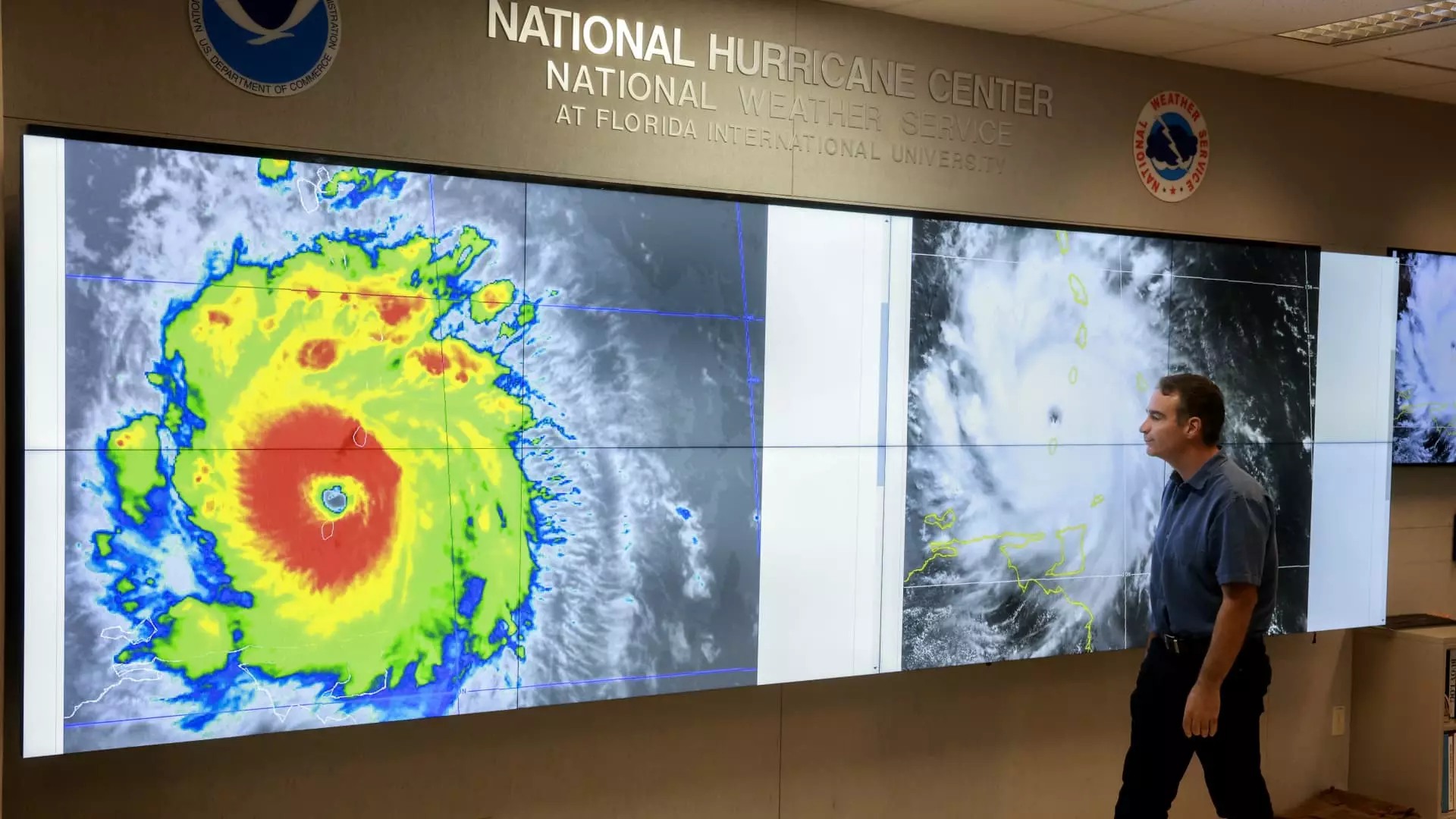As we move closer to the 2025 hurricane season, the National Oceanic and Atmospheric Administration (NOAA) has issued a warning that is both alarming and hard to ignore: a predicted 60% likelihood of an above-average season, with estimates of 13 to 19 named storms brewing. This is not just data; it’s a red flag flapping in the wind, urging us to reconsider our complacency toward climate-related disasters. Six to ten of these storms could escalate to hurricane statuses, and a few might even achieve the terrifying designation of “major hurricanes.” The statistics tell a dismal story, but it’s the underlying issues—the response mechanisms and our preparedness—that require a deeper inspection.
Bureaucratic Blind Spots: Budget Cuts in Climate Science
Laura Grimm, the acting administrator of NOAA, faced difficult questions regarding imminent budget cuts aimed at climate research during a recent press conference in Jefferson Parish, Louisiana. Yet, her assurances about NOAA’s readiness raise skepticism. With various budget constraints, one cannot help but question how deeply these cuts will penetrate the effectiveness of NOAA’s vital work—the very work that intends to prepare communities and save lives. When faced with such harsh realities, the agency’s focus on its staffing levels feels like a superficial answer to an endangering dilemma. The overarching point is that weather prediction and modeling are essential—not just for accuracy but for real mitigation of loss and safeguarding life.
A Decade of Disastrous Trends
The figures from the past decade are staggering, with annual insured losses averaging over $33 billion—a staggering 90% increase from the preceding ten years. It’s hard not to draw parallels between these losses and our growing vulnerability. As our population continues to swell in high-risk areas, the price of our belongings skyrockets, the lurking threat becomes ever more pronounced. Aon’s report puts this looming existential threat into stark perspective by suggesting that the very ability of the insurance industry to provide affordable home insurance is in peril. It’s a precarious situation that demands both immediate attention and long-term solutions.
Climate Change: An Unseen Adversary
The roots of this crisis stretch beyond mere statistics; they dive into the muddy waters of climate change, an issue that often finds itself sidelined in political discourses. Bill Clark, CEO of Demex, aptly summarized a painful reality: reinsurance costs associated with severe storm losses have skyrocketed to their highest in 20 years. Such financial strains only exacerbate insurers’ difficulties in managing risk and their resolve in meeting coverage needs for homeowners. The reality is that climate change is not an abstract future problem; it’s a constant, relentless adversary that we’re entangled with now. We are standing on the precipice, contemplating a life lived as it was before or recognizing the transformation our environment demands.
Occupying High-Risk Areas: A Choice with Consequences
As our society becomes increasingly urbanized, more people are choosing to live in regions with high climate risks. This trend is not merely an unfortunate coincidence; it’s a nuanced dilemma where individual choice meets environmental reckoning. Communities must grapple with the notion that our geographical choices can lead to devastating financial repercussions as entire neighborhoods face the destructive force of natural disasters. The forecast for 2025 indicates that we are living on borrowed time, one which could prove catastrophic if we fail to act decisively.
Investing in Resilience: A Flawed Strategy?
There are ongoing conversations about investing in infrastructural resilience—better building codes, public projects, and standards for defensible spaces around homes. The president of Jefferson County Parish, Cynthia Lee Sheng, articulated an important point: for every dollar spent on mitigation, we could potentially save $13. While those numbers sound promising, they don’t fully encapsulate the swift-paced changes we face. Can our mitigation efforts keep up with the increasing frequency and intensity of storms? The question remains whether our reliance on these statistical assurances is misplaced in the face of an unpredictable climate future.
Finally, as we acknowledge the memories of disasters like Hurricane Katrina—an event that molded the landscape of local recovery—one must question whether nostalgia can be a pacifier or a catalyst for action. Rather than resting on the laurels of what has been achieved, we should focus on fortifying systems that protect us from what lies ahead. Ignoring the grim predictions for the 2025 hurricane season may prove to be the most costly error of all.

